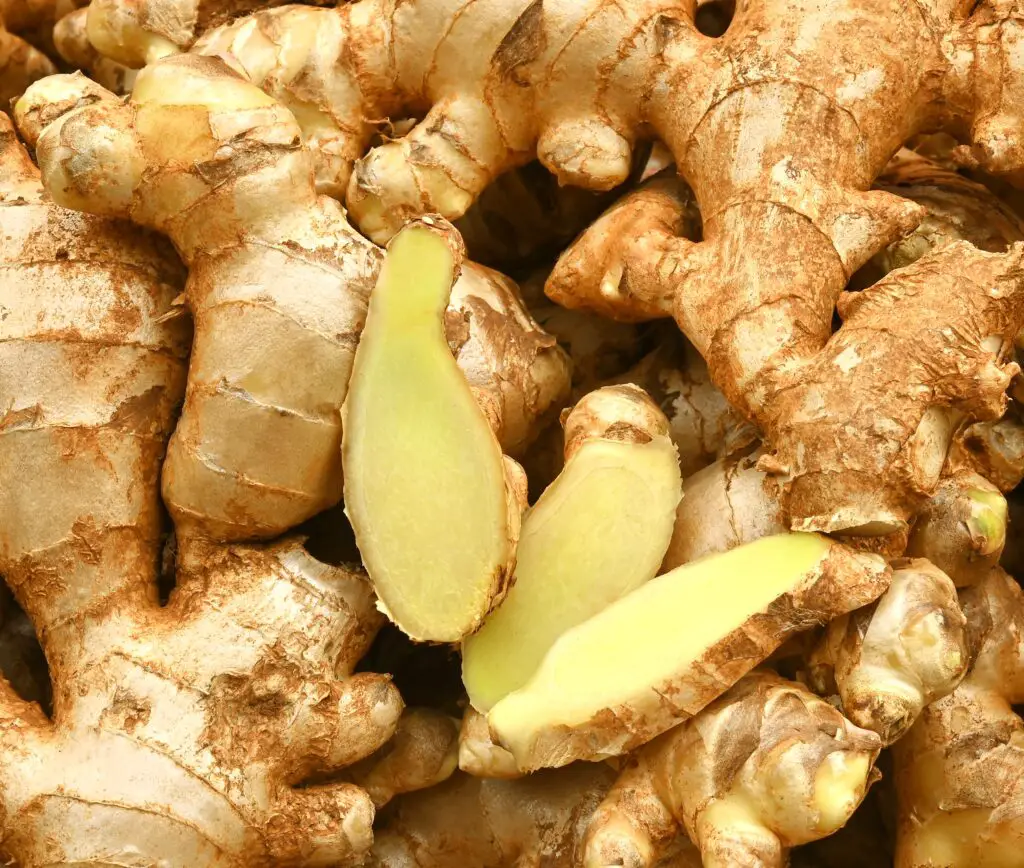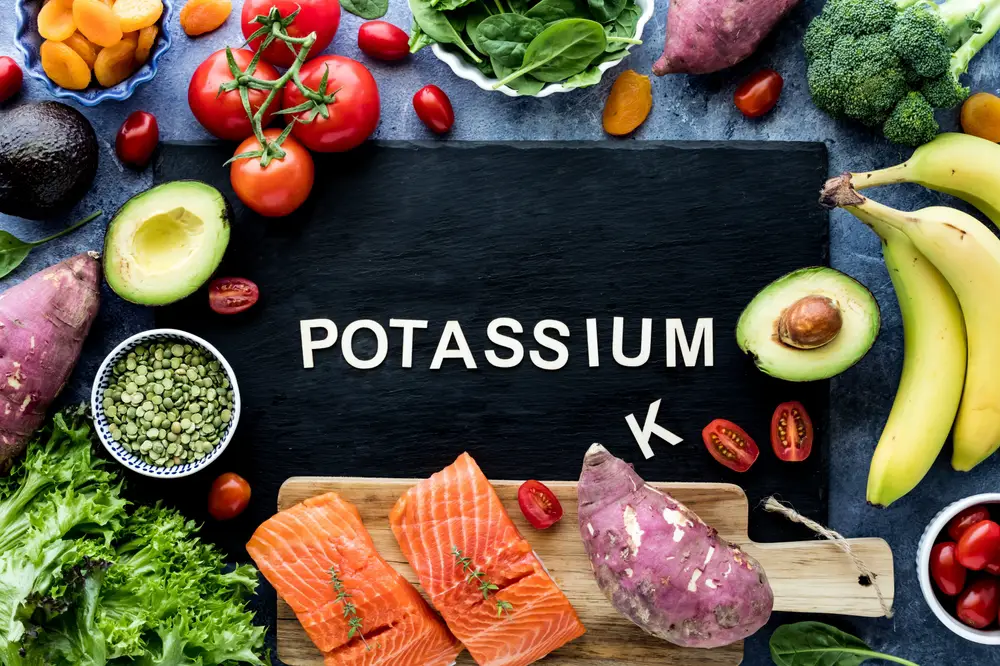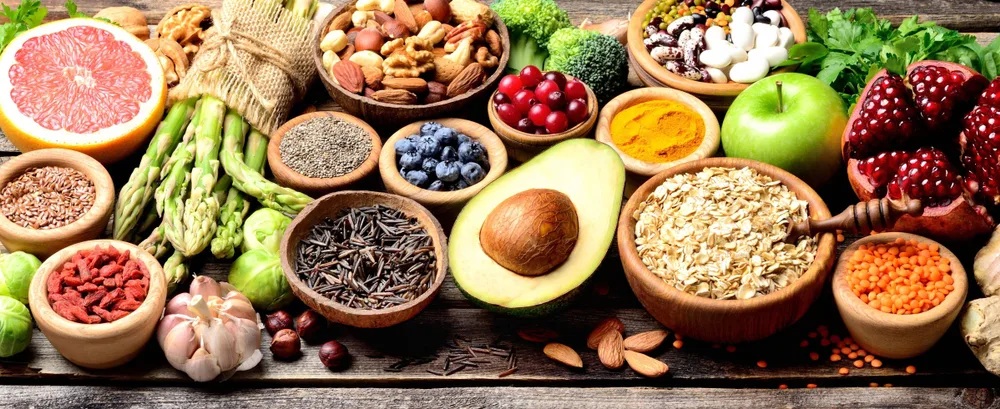Table of Contents
Tomatoes readily come across as a healthy and delicious vegetable. Botanically, tomatoes are actually a fruit—and a fruit like no other. They are packed with nutrition but also low in calories and carbs.
We explore all the ways tomatoes can benefit your health and give you tips on picking out the best of the crop. There are a few downsides to tomatoes, but we have those covered too. Join us as we bring more to the joy of eating tomatoes.
How tomatoes came to be
Tomatoes are believed to be indigenous to the South American region. During the 16th century, these fruits made their debut appearance in Europe. Interestingly, people first thought they were poisonous and avoided eating them until the 17th and 18th centuries.
The first tomatoes in Europe were cherry-sized and yellow. So they were called ‘pomo d’oro,’ meaning ‘golden apple.’ Now, tomatoes are a beloved vegetable in the US and come in second place only to potatoes (1).
The raw facts on tomato nutrition
The tomato (Solanum lycopersicum) is actually a juicy fruit of around 95% water. That’s a lot of hydration, but the remaining 5% will surprise you. Most are carbs (4% Daily Value (DV)), but tomatoes are comparatively rich in fiber, minerals, and ant-oxidants (2, 3).
According to the USDA, 100 grams of raw ripe tomato, or a small to medium-sized tomato, provides a variety of nutrients (2):
- Calories: 18 kcal
- Water: 95 grams
- Protein: 0.9 grams
- Fat: 0.2 grams
- Carbs: 3.9 grams
- Fiber: 1.2 grams
- Sugar: 2.6 grams
- Cholesterol: 0 milligrams
- Sodium: 5 milligrams
1. Fiber is a winner
An average-sized tomato (123 grams) provides about 1.48 grams of dietary fiber, which is 5% of the recommended daily value (DV). That’s not bad for a small little fruit.
Fiber can soothe bowel disorders like constipation (4). It also helps you stay full, and with 95% water content, tomatoes are an excellent weight-loss choice (5).
2. Vitamin C tops out
For their size and high water content, tomatoes are surprisingly nutrient-dense fruit. In particular, the vitamin C content of a single 100 g tomato is 15% of the recommended daily value (DV):
- 15% DV vitamin C – an important antioxidant that helps the body repair and is crucial for maintaining collagen. Collagen is the principal protein of skin, bones, teeth, blood vessels, heart valves, and eye lenses (6).
- 7% DV vitamin K1 – crucial for our bone health and wound recovery (7, 8).
- 5% DV vitamin A – protects eyes, improves skin and reproductive health.
- 4% DV vitamin E – an antioxidant for immune support, vascular function, and protection against cancer (9).
Tomatoes also contain B-complex vitamins, although, in small amounts, these support blood circulation, anti-inflammatory, cognition, and red cell production (10).
3. Surprising mineral content
Of all minerals, copper is where tomatoes are at. It’s not a lot compared to other fruits, but pretty similar to that of a banana. For every 100 grams of tomato, you have other decent mineral values, too (11):
- 7% DV copper – supports healthy nerves, blood vessels, and bones (12).
- 5% DV potassium – for blood pressure control, nerve support, and muscle and kidney function (13).
3% DV magnesium – improves nervous system and heart health and helps with lipid control(14).
Tomatoes are low in calories and high in vitamins and minerals, including vitamin C, K1, and potassium. They are also high in fiber, aiding digestion and weight loss, and are an excellent source of water for proper hydration.
Proved health benefits of eating raw tomatoes
Tomatoes are grown worldwide and come in many different types, each with its own health benefits. Let’s explore some amazing health benefits they bring to the table!
Lycopene and other antioxidants
One of the top benefits of tomatoes is their antioxidant properties. Free radicals in your bloodstream can be harmful, causing oxidative stress and tissue damage (15). Some free radical fighters found in tomatoes include:
Lycopene in tomatoes: Lycopene is a substance mostly found in the skin of ripe tomatoes. To get the most lycopene from tomatoes, experts suggest eating them with their skin on (16).
Lutein in tomatoes: Luteincan has been associated with reduced risk for age-related macular degeneration, possibly by protecting your eyes from the blue light often found in smartphones and computers. It can also help prevent or slow down inflammation and is associated with decreased artery thickening (17).
Not only that, vitamins C and E and minerals like manganese and zinc work together to add additional antioxidant effects (11). Despite these findings, more clinical research is needed to further quantify the health impact of antioxidants.
A heart-healthy superfood
In traditional Chinese culture, food and medicine are closely linked. Ancient Chinese believed that red-colored foods, such as tomatoes, nourish the heart
(18). Scientists have now found that tomatoes can actually protect your heart health in four ways:
1. Fighting free radicals: The antioxidants (such as Vitamin C and Vitamin E) in tomatoes may help combat free radical damage that may link to chronic heart disease (19).
2. Balancing blood pressure: Tomatoes are a good source of potassium and magnesium, which are associated with improved cardiac health by reducing tension in the blood vessels and reducing blood pressure. This may further reduce the stress on the heart (14, 20).
3. Regulating fat in the blood: Potassium and lycopene in tomatoes may help lower bad (LDL) and improve good (HDL) cholesterol levels. These are key culprits in heart diseases (21, 22).
4. Reducing the risk of stroke and heart attack: Strokes and heart attacks are caused by plaques (clumping of lipids and white blood cells) that break off of the artery wall and activate platelets to build a clot. This causes blockage of blood flow in the arteries. Tomatoes have different nutrients that may help reduce plaque formation and also prevent platelets from clotting (23, 24).
A friend for skin health
One of the best tips for healthy skin is to eat healthy food, and tomatoes are a great food to include in your diet.
They are an excellent source of vitamin C which helps keep your skin elastic and is important in providing a strong skin barrier (6).
Plus, tomatoes contain compounds like lycopene, β-carotene, and antioxidants that can protect against sunburn. They help moisturize your skin and control signaling pathways when dealing with the UVB rays from the sun (25, 26).
According to one clinical trial study, eating 40 grams of tomato paste tomato every day can help reduce reddening when exposed to UV light (27). However, keep in mind that tomatoes cannot replace your sunscreen.
A tonic for workout recovery
Many athletes take dietary supplements and vitamin supplements to improve their fitness and performance (28). As a vitamin-rich fruit, tomatoes can be a good alternative.
Intense exercise can make your body produce harmful substances called reactive oxygen species (ROS) and reactive nitrogen species (RNS). These can make your muscles tired and weak. But by eating antioxidant-rich tomatoes, you can reduce ROS in exercised muscles and potentially improve recovery (29, 30).
Tomatoes are also a great source of potassium and vitamin K. These are important for muscle function and tissue repair and can help prevent cramps during exercise (13).
A natural cancer fighter
In laboratory studies, tomato extract has been shown to kill or inhibit cancer cells in no less than 13 different organs (31).
Several studies also revealed that eating tomatoes may lower the risk of prostate cancer by 30-40%. The effects are mainly due to the lycopene and carotenoids tomatoes contain (32, 33).
Still, more research is necessary to confirm these benefits.
Eating raw tomatoes regularly can help lower your chances of getting heart disease, bad skin, and certain cancers. That’s because tomatoes contain lycopene, β-carotene, and other antioxidants. We still need more research to fully understand the full benefits of tomatoes.
Nutrition standoff — raw and cooked tomatoes
Since tomatoes are equally popular in salsas, sauces, and various cooked preparations, you may be wondering which is better—raw or cooked? Recent studies show that cooking tomatoes can change some of their healthy components (34).
Lycopene and vitamin E can survive heat, so most cooked tomatoes retain those nutrients. Yet, cooking can break down vitamin C, vitamin B9, and β-carotene. Raw tomatoes might be better for getting those nutrients.
There isn’t really a clear answer because the research shows different things. Some say tomato paste has more lycopene, but others say less.
The way of cooking, the kind of tomato, and how it was grown may make a difference in the results. So, we can’t say for sure if cooked or raw tomatoes are better. However, we can benefit from eating both.
Commercial methods for ripening tomatoes
Processing tomatoes are often harvested when they are fully ripe. However, supermarket tomatoes are mostly picked when they are still green and immature (34).
To make them red, companies spray the tomatoes with a ripening hormone called ethylene gas (35, 36). This hinders the development of natural savor and tastiness.
Locally grown tomatoes usually ripen naturally and are, therefore, more flavorful (37).
How to choose the best tomatoes
There are over 15,000 types of tomatoes! Around 3,000 varieties are heirlooms or heritage, which are grown all over the world. Home gardeners and organic producers prefer these for their interesting shapes and better taste (38).
Hybrid tomatoes, commonly found in supermarkets, often have to sacrifice flavor for ease of shipping and handling.
If there aren’t any farmers’ markets nearby, you can still find quality tomatoes at supermarkets. Choose ones that are not fully ripe and let them ripen at home for a few days. You might be surprised at how similar they taste to vine-ripened tomatoes.
Tomatoes come in different shapes, colors, and sizes, but there’s no relationship between color and flavor. A tasty tomato will have smooth and even skin. It will also feel heavy for its size, with a sweet floral smell, and the inside will be meaty and juicy.
Summer is the peak tomato season. But if you need an off-season one, the smaller or cherry tomatoes are better.
Contrary to popular belief, storing fresh tomatoes in the refrigerator is not recommended. This can give them a mealy texture and reduce the flavor. Instead, try storing them in a cool, dry place.
Tomatoes come in many different shapes, sizes, and colors, yet these do not determine the flavor. It is best to choose naturally grown tomatoes from the farmers’ markets. In the supermarket, look for firm tomatoes with uniform skin. You can store them in a cool and dry place.
Dangers of eating tomatoes
Tomatoes are considered generally safe and don’t have any known interactions with medications (39). There are, however, a few things to know about the health and safety of tomatoes.
Tomatoes are acidic. If you have acid reflux (GERD) or heartburn, you should limit your tomato intake (40).
Tomatoes also may increase the risk of kidney stones. The high oxalate content can react with calcium to form calcium oxalate, the most common type of kidney stone (41).
Tomato allergies are rare but more common with those allergic to pollen or latex. (42, 43).
Tomatoes are ranked as the 11th food with high pesticide loads by the Environmental Working Group’s list (44). They can also carry harmful bacteria like Listeria or Salmonella. Therefore, wash your tomatoes thoroughly with salted water.
Tomatoes are generally fine for most people to eat. Some compounds in tomatoes can be a problem with GERD, arthritis, and kidney stones. Tomato allergies are rare, but people with glutamate sensitivity need to be careful. For store-bought tomatoes, you should wash them thoroughly in salted water.
Can tomatoes help with weight loss?
Tomatoes support weight loss because they are low in calories and high in fiber. They can keep you feeling full, and their water content keeps you hydrated. Tomatoes don’t, however, have any fat-burning enzymes.
What is the best time to eat tomatoes?
Tomatoes can be eaten at any time. Some people eat them in the morning, while others prefer them in lunchtime salads and sandwiches. The key is to enjoy them when it best suits you because tomatoes are a really healthy food.
Are canned tomatoes still good?
Canned tomatoes are just as healthy as fresh ones because canning preserves most of the nutrients. Just be sure to choose ones without added salt or sugar.
How many tomatoes should I eat a day?
You can eat as many tomatoes as you want each day. There is no upper limit for consumption. Just take note of how your body feels and adjust accordingly.
How long do fresh tomatoes typically last?
Fresh tomatoes can last for a week when kept in a cool, dry place. Avoid refrigerating them, as this can make them mealy and worsen their taste.
Why are tomatoes good for men?
Tomatoes are rich in vitamin C, which can increase testosterone levels and promote healthy sperm production in men. They also contain lycopene that may protect against prostate cancer, but more research is needed to confirm this.
Are tomatoes good for a Keto diet?
Absolutely! Tomatoes are low in carbs and high in fiber, making them a great addition to any Keto meal. So go ahead, and add some tomatoes to your next Keto-friendly meal!
Summary
Tomatoes are a wonderful fruit, and there are many surprising things to know about them. Here are five key things to remember about tomatoes:
- Raw tomatoes are an excellent source of fiber, vitamins, minerals, and antioxidants.
- The major health-promoting compound found in tomatoes is lycopene.
- The benefits of eating raw tomatoes range from protecting your heart to improving your skin.
- When choosing the freshest tomatoes, it’s best to look for firm and smooth ones.
- Tomatoes are generally healthy, and allergies are rare, but there are a few things to note for GERD sufferers, kidney issues, and glutamate sensitivity.
So next time you’re looking for a healthy treat, consider reaching for a fresh, ripe tomato. Your body will thank you for it!

















Comments
0